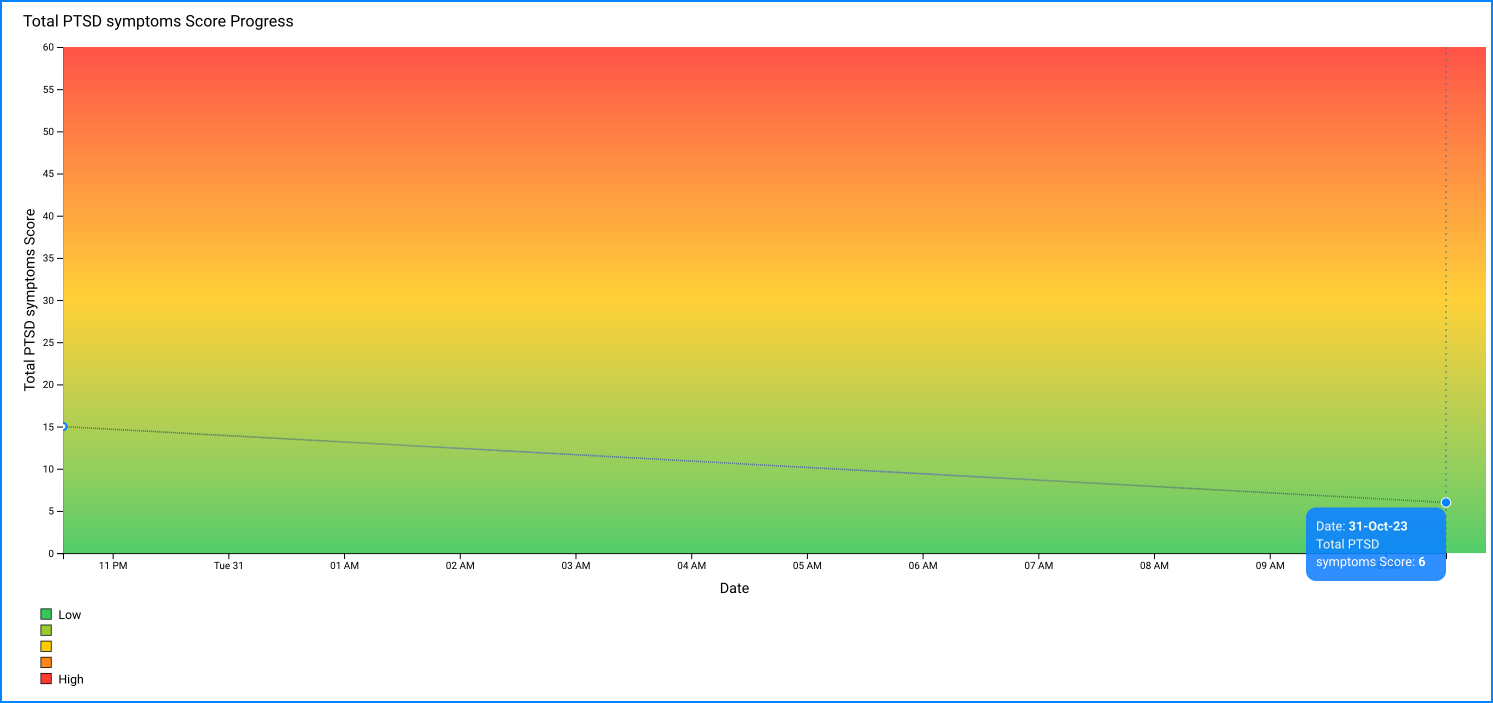PTSD SYMPTOMS
Symptom Subscales
Start delivering measurement based mental health care
Conduct psychological assessments remotely, get scores automatically, and maintain clinical records securely
Create account

The City Birth Trauma Scale (City BiTS) is a promising measure of birth-related PTSD. It can be used clinically or in research to examine PTSD symptoms and clinical disorder in women who have experienced trauma in childbirth. It has 29 questions that measure PTSD according to the diagnostic criteria of the DSM-5 published by the American Psychiatric Association (2013).
You can create a free account on PsyPack to access fillable PDFs, manuals and educational resources for the City BiTS
PTSD SYMPTOMS
Symptom Subscales
Total PTSD symptoms
Dissociative symptoms
Please note Dissociative symptoms are not symptoms of PTSD but are for diagnostic purposes or if you are interested in dissociation during birth as a separate phenomenon.
A number of research studies have now found that the symptoms of the City BiTS form 2 clusters and that these might be related to outcomes in different ways. The authors therefore recommend you calculate these subscales as well as total PTSD symptoms:
1. Birth-related PTSD symptoms: Q3 to Q12 inclusive
2. General PTSD symptoms: Q13 to Q22 inclusive
DIAGNOSTIC CRITERIA
[A] Stressor Criterion
[B] Re-experiencing symptoms (1 needed)
[C] Avoidance symptoms (1 needed)
[D] Negative cognitions and mood (2 needed)
[E] Hyperarousal (2 needed)
[F] Duration
[G] Distress and impairment
[H] Exclusion criteria
PTSD with dissociative symptoms
PTSD with delayed onset
Please note a score of 0 on Q25 suggests PTSD prior to birth so is a measure of prevalence rather than new incidence of PTSD due to birth
Please note Dissociative symptoms are not symptoms of PTSD but are for diagnostic purposes or if you are interested in dissociation during birth as a separate phenomenon.
A number of research studies have now found that the symptoms of the City BiTS form 2 clusters and that these might be related to outcomes in different ways. The authors therefore recommend you calculate Birth-related PTSD symptoms and General PTSD symptoms subscales as well as total PTSD symptoms.
Please note a score of 0 on Q25 suggests PTSD prior to birth so is a measure of prevalence rather than new incidence of PTSD due to birth.
PsyPack can automatically score the City BiTS assessment and prepare corresponding tables and graphs.

Further, PsyPack automatically plots a graph to help you easily track progress over time.

Postpartum PTSD, Post-Traumatic Stress Disorder (PTSD)
The purpose of the evaluation is to:
Self-administered
Clinical
Questionnaire
Adults
5 to 10 minutes
Since the questionnaire relies on client self-report, all responses should be verified by the clinician, and a definitive diagnosis is made on clinical grounds taking into account how well the client understood the questionnaire, as well as other relevant information from the client.
Post-traumatic stress disorder (PTSD) affects 4% of women after birth yet there are very few questionnaire measures of postpartum PTSD that have been validated in this population. In addition, none of the available questionnaires assess postpartum PTSD in accordance with criteria specified in the latest edition of the Diagnostic and Statistical Manual [DSM-5]. The City Birth Trauma Scale is a 29-item questionnaire developed to measure birth-related PTSD according to DSM-5 criteria of: stressor criteria (A), symptoms of re-experiencing (B), avoidance (C), negative cognitions and mood (D), and hyperarousal (E), as well as duration of symptoms (F), significant distress or impairment (E), and exclusion criteria or other causes (H). Two additional items from DSM-IV were also included on the basis of evidence suggesting they might be important in this population. The first was criterion A2 that women responded to events during birth with intense fear, helplessness or horror. The second was symptoms of emotional numbing. Items were first reviewed by researchers (n = 9) and postpartum women (n = 8) and revised accordingly. The questionnaire was then completed by 950 women recruited online. Results showed the City Birth Trauma Scale had excellent reliability (Cronbach's α = 0.92) and is easy to understand (Flesch reading score 64.17). Exploratory factor analysis found two factors which together accounted for 56% of the variance: (i) Birth-related symptoms (40.8% variance) and (ii) General symptoms (15.5% variance). PTSD symptoms were highly associated with distress, impaired functioning, and women reporting they wanted treatment (r = 0.50–0.61). Removing DSM-IV A2 criteria only increased births classified as traumatic by 2%. Adding the item on emotional numbing did not change the psychometric properties of the scale. These items were therefore removed. The City Birth Trauma Scale has good psychometric properties and the two symptom clusters identified are consistent with previous research on symptoms of postpartum PTSD. This scale therefore provides a promising measure of PTSD following childbirth that can be used in research and clinical practice.
Ayers S, Wright DB and Thornton A (2018) Development of a Measure of Postpartum PTSD: The City Birth Trauma Scale. Frontiers in Psychiatry, 9:409.